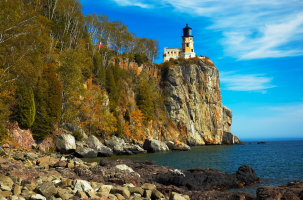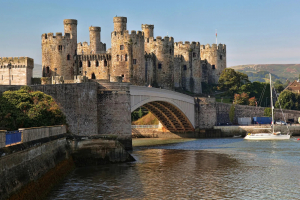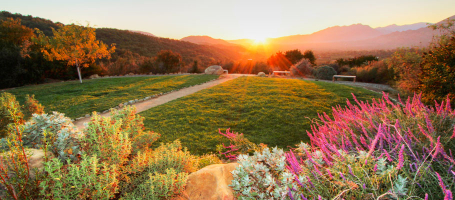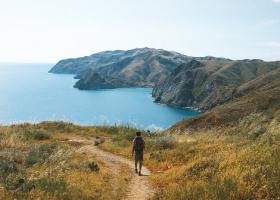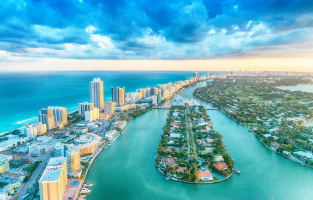Top 9 Best Things to Do in Tanzania
Tanzania is a beautiful East African country that borders the Indian Ocean and other nations namely Congo, Zambia, Kenya. The majesty and wild beauty of ... read more...Tanzania, along with the pleasant tropical climate year-round are what draw tourists there the most. If you are one of the fortunate travelers visiting it, here is a list of best things you don't want to miss in a trip to Tanzania.
-
Tanzania's oldest park, Serengeti, is on top of the most famous destinations in the country. Recognized as a UNESCO World Heritage Site, it is known as a home to a diversity of wildlife and the huge wildebeest migration. There are around 35 different types of plains animals along with about 3,000 lions, spotted hyenas, leopards, rhinoceroses, hippopotamuses, giraffes, cheetahs, and baboons in large numbers inhabiting the park. Besides, Serengeti also has more than 500 species of birds such as the Kori bustard, Fischer's lovebird, Grey-breasted spurfowl, Rufous-tailed weaver, etc. making it a perfect destination for avid birders. Going on a safari in Serengeti National Park means you can spot and take photographs of many wildlife species that are found nowhere but in Tanzania.
The Great Migration is undoubtedly the highlight of Serengeti that you don't want to miss. Millions of wildebeest, zebra and gazelle northwards come back to the plains of Serengeti after the annual migration to the Masai Mara National Reserve in Kenya. Considered one of the 10 natural wonders of the world, the Great Migration is the reason that many travelers make their trip to the park. Therefore, visiting Serengeti during the period of the migration is recommended. The best time to discover this wonderful park is from late June to August, or from January to March.
Wildlife in the Serengeti will not leave you disappointed. In order to have a safety trip, you should follow the professional guide before visiting the world of wildlife.

Photo by Soiber Christian on Pixabay Video by Wonders of Nature -
Located in the Indian Ocean, Prison Island (also known as Changuu island) is a small island that lies 5.6 kilometers northwest of Stone Town, Unguja. The First Prime Minister of the former state of Zanzibar, Majid bin Said, bought the island but never reclaimed it. Then, in the 1860s, he decided to sell the island to two Arab slave owners. Since then, the island has become a prison for slaves and is called "Prison Island". The remnant of the former prison becomes a historic site and a guesthouse for tourists to visit.
As soon as you approach Prison Island, you will see a small island covered with trees, appearing like a green carpet in the middle of a smooth sea. The clear and turquoise water makes it an ideal dive site for divers. As you go away from the shore, you'll come across a route that is surrounded on either side by vegetation. You will arrive at a building complex after a short distance; some of the structures have red domes and fancy wooden railings and verandas, while others are austere structures with tall, solid walls and aged blue doors. That is the ruins of the former prison where you can enjoy the spectacular view of the island. A highlight of Changuu is the population of giant tortoises. It is the home of Aldabra tortoises, one of the biggest tortoises in the world. Visitors now have the chance to see these giant creatures and feed them.

Photo by Brigitte Werner on Pixabay Video by The Last Traveller -
Local food is a wonderful connection and insight to local culture and the people so it is considered as an essential part of traveling aboard. Although Tanzania is famous for its wilderness, you should not skip on tasting their wonderful cuisines. Seasonings like turmeric, cumin, ginger, cinnamon, cloves, and coconut milk are frequently used in Tanzanian recipes, and spicy foods are commonly available here. Tanzanian foods are inspired by Bantu, Persian, and Indian dishes, giving them a unique taste. Here's a list of some popular dishes that you may want to try on your next trip to this East African country:
Ugali: The dish consists primarily of boiling water or milk mixed together with corn starch (or maize flour) until becomes a thick ball. Each guest then breaks it into small pieces and dips them into some stews and sauces.
Mtori: It is beef stewed with bananas and spices dish, then crushed with ingredients and cooked until it becomes like a thick liquid like soup or porridge.
Urojo: It is composed of various vegetables and meats that are completely cooked in a sauce which is made of lime juice, wheat flour and spicy seasoning.
Irio: This healthy dish combines of mashed potatoes, corn, peas and some greens such as watercress or spinach is a popular side dish in Tanzania.
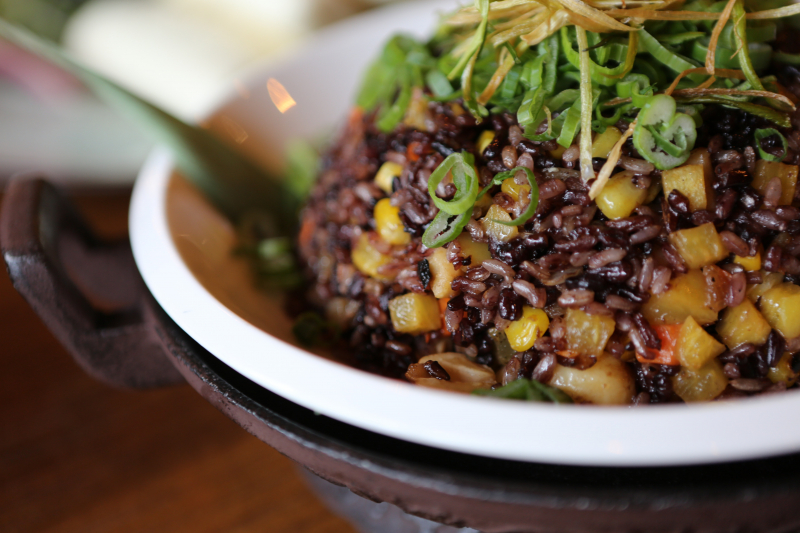
Photo by Sargent Seal on Unsplash 
Photo by Eric Zhu on Unsplash -
Located in the east coast of Africa, Zanzibar consists of two islands, Unguija and Pemba, with a total area of 2,650 square kilometers and a population of approximately 1.4 million people. With its white sand, turquoise sea, and historic port town shaded by palm palms, the island is referred to as "The Pearl of Africa". If in the past Zanzibar was famous as the world's largest clove growing area and also a notorious slave trading center, then now it is attracted many tourists for its stunning beaches and fun activities. Magnificent underwater landscapes together with a variety of marine creatures make it a perfect dive site.
Scuba-diving in Zanzibar features coral reefs under the sea that contributed to the construction of Stone Town, a valuable architectural complex on the island recognized by UNESCO as a World Cultural Heritage. It also offers you the chance to come across an abundance of sea creatures such as frogfish, cuttlefish, green turtles, dolphins, nudibranchs, seahorses, etc. Dive beside a variety of marine life including durable and flexible coral patches that support reef fish, and several other marine inhabitants. Those splendid landscapes under the sea will definitely fascinate macro photographers.
Want to immerse yourself in the turquoise water and mysterious undersea world? Go to Zanzibar to experience scuba diving and you will not regret it.
Photo by Nici Keil on Pixabay Video by The Viking Explorer -
Mwaka Kogwa is a Tanzanian festival that celebrate the arrival of Nairuz, marked as the beginning of New Year according to Persian calendar. This festival is held all across the Zanzibar island in late July. However, the largest celebration take place in Makunduchi village, located in Zanzibar's southeast coast. On this four-day festival, many tourists come to the island to witness several traditional activities with local people.
Mock fights is a long-lived tradition of Mwaka Kogwa where a man beat another with banana sticks. It is seen as a ritual purification to put a stop to all animosities as the New Year is welcomed in. The well dressed women of the village go around the village and the fields singing songs about family, love, and joy during the fight. As the battle come to its end, a local shaman would set fire to a small nearby hut, then run outside, and hide himself in a nearby bush. People will then try to put out the fire. This means that if someone's house burns down throughout the year, everyone will survive. After that, everyone will gather and eat a big feast, praying for happiness and prosperity.
Joining Mwaka Kogwa is a must-do activity if you want to explore Tanzanian culture. The bustling and joyful atmosphere of this unique traditional festival will lighten your mood.
Video by DailyEscape_stories 
Photo by Avel Chuklanov on Unsplash -
The Hadzabe people are a unique ethnic group living in the area around Lake Eyasi, Central Tanzania. They are hunter-gatherer people and have been maintaining a quite isolated, primitive lifestyle for more than 10,000 years. They live entirely dependent on the forest, exactly as their ancestors did, and do not engage in any form of agriculture or animal husbandry.
The majority of Hadza still live in traditional houses made of branches and straw, similar to many other rural communities in Tanzania. Many Hadza houses are made up of two units connected together, one for sleeping and the other for cooking and socializing. The gathering of wild fruits and tubers as well as the hunting of antelope, baboons, wild birds, etc., are their main daily job to keep them living. Hadza people have almost no contact with the modern world; they communicate with each other in their own language and refuse to live a civilized way of life as normal people.
If you choose to go to Lake Eyasi and see the Hadzabe, you will have the chance to join in their daily activities and enjoy the beauty of the savanna scrubland. Staying there, you may occur to see some wildlife animals such as antelope, baboons, hyenas, etc., and a few of the amazing sights include rivers, rocky outposts, acacia and baobab trees. Visitors should find a tour guide to lead and accompany you for safety.

Photo by Alexander Strachan on Unsplash Video by Rama M -
Kilwa Kisiwani and Songo Mnara, a World Heritage Site recognized by UNESCO, used to be two important East African ports between the 13th and 16th centuries. At present, the Ruins of Kilwa and Ruins of Songo Mnara can be found on two islands that are adjacent to one another off the coast of Tanzania, roughly 300 kilometers south of Dar es Salaam.
Kilwa Kisiwani and Songo Mnara were once Swahili commercial centers, and their wealth was built on the control of commerce with Arabia, India, and China in the Indian Ocean. After being sold to a businessman in the ninth century, Kilwa developed into a significant town and a key trading hub along the coast and inland as far as Zimbabwe. Gold and iron from Zimbabwe, ivory and slaves from Tanzania, and textiles, jewelry, porcelain, and spices from Asia made up the majority of the trade. Nowadays, a large portion of the island is covered in Kilwa Kisiwani's ruins, and many areas of the city are still unexplored. Visitors can witness some standing ruins including the Great Mosque, the palace Husuni Kubwa, Husuni Ndogo, etc., with ancient beauty. On the other hand, the ruins of Songo Mnara are located at the northern tip of the island with remnants of five temples, a royal complex and 33 household structures.
In conclusion, the Ruins of Kilwa and Songo Mnara are places worth visiting if you are into history and want to explore more about the old trading centers of Tanzania.

Photo by Nichika Yoshida on Unsplash Video by TAWA TANZANIA -
Mount Kilimanjaro is a dormant volcano in Tanzania consisting of 3 volcanic cones: Kibo, Mawensi and Shira. Due to its height, this mountain is often known as "The Roof of Africa". With an altitude of 4,600 meters from the mountain's base and 5,895 meters above sea level, it is also the highest standing peak in the world, ranked fourth among the world's seven highest mountains. With its snowy summits looming over the savannah below, Mount Kilimanjaro rises splendidly alone above the surrounding plains.
If you want to make your trip more meaningful and memorable, you might take part in the Kilimanjaro Challenge held by UNICEF. It is a charity activity that combines the exciting experience of trekking to the top of Africa with the humanitarian purpose of raising funds for children's projects. As you finish a 10-day trek to Kilimanjaro with the UNICEF team and other participants, you will gain money in order to help vulnerable children have a better life through several educational, health care, etc. programs. Moreover, along the trip, you will have the chance to witness the wilderness and breathtaking Rongai Route on the way to reaching the top of Kilimanjaro. Being a part of this journey not only gives you enjoyable moments but also allows you to make a positive change in the children's life. For more information, you should visit the website below.
Website: https://www.unicef.org.uk/fundraise/events/challenge-events/trek/mount-kilimanjaro/

Photo by Greg Montani on Pixabay Video by Eli from Russia -
Located in Arusha, the Arusha Cultural Heritage Center displays the art and artifacts of more than 120 tribes of Tanzania. The Cultural Heritage Arusha Tanzania Center, established in 1994, is a privately owned complex of boutiques and galleries that features works of art by well-known African artists. You can spend time at semi-precious stones and jewelry stores, clothing shops, and an excellent commercial art gallery there. There are also restaurants where you can dine after visiting the center. This place offers you the chance to explore the many different types of art, such as carvings, paintings, and photography that may take you half of the day to witness all. Moreover, you will get to understand more about the Tanzanite, the beautiful blue stone from Tanzania. This diamond is endemic to the Mirerani Hills and has the name of its sole known source, Tanzania. When visiting the Arusha Center, you can learn more about the history and the impact of the gem on the development of Tanzania and other countries.
The Arusha Cultural Heritage Center has become recognizable thanks to the distinctive architecture of the main building which bears a resemblance to the Uhuru Peak of Mount Kilimanjaro.
Address: Dodoma St, Arusha, Tanzania
Opening hours: Daily from 8.00 am to 5.00 pm
Ticker Price: Free
Hotline: +255 27 254 7548

Photo by Raissa Lara Lütolf (-Fasel) on Unsplash Video by The Dockrays












